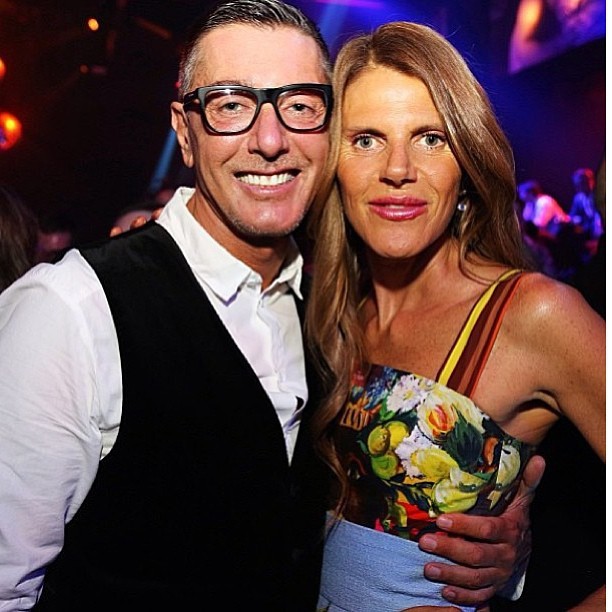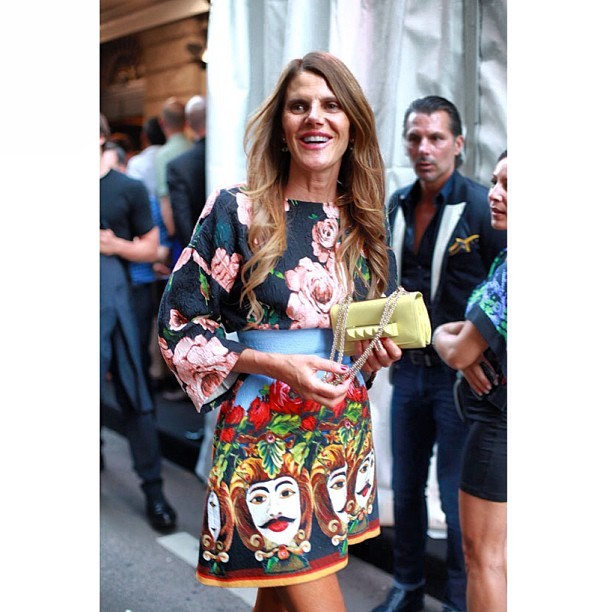The article written at Helpguide.com explaines what a healthy eating should be like. To me, it is not a tool or a source to look skinny or to be a quick fix to lose weight. It is rather, a lifestyle, a life choice and an ultimate part of someone's life...
Helpguide.com (2014) asserts that healthy eating is not about strict nutrition philosophies, staying unrealistically thin, or depriving yourself of the foods you love. Rather, it’s about feeling great, having more energy, stabilizing your mood, and keeping yourself as healthy as possible—all of which can be achieved by learning some nutrition basics and using them in a way that works for you. You can expand your range of healthy food choices and learn how to plan ahead to create and maintain a tasty, healthy diet.
Healthy eating tip 1: Set yourself up for success
To set yourself up for success, think about planning a healthy diet as a number of small, manageable steps rather than one big drastic change. If you approach the changes gradually and with commitment, you will have a healthy diet sooner than you think.
- Simplify. Instead of being overly concerned with counting calories or measuring portion sizes, think of your diet in terms of color, variety, and freshness. This way it should be easier to make healthy choices. Focus on finding foods you love and easy recipes that incorporate a few fresh ingredients. Gradually, your diet will become healthier and more delicious.
- Start slow and make changes to your eating habits over time. Trying to make your diet healthy overnight isn’t realistic or smart. Changing everything at once usually leads to cheating or giving up on your new eating plan. Make small steps, like adding a salad (full of different color vegetables) to your diet once a day or switching from butter to olive oil when cooking. As your small changes become habit, you can continue to add more healthy choices to your diet.
- Every change you make to improve your diet matters. You don’t have to be perfect and you don’t have to completely eliminate foods you enjoy to have a healthy diet. The long term goal is to feel good, have more energy, and reduce the risk of cancer and disease. Don’t let your missteps derail you—every healthy food choice you make counts.
Think of water and exercise as food groups in your diet.
Water. Water helps flush our systems of waste products and toxins, yet many people go through life dehydrated—causing tiredness, low energy, and headaches. It’s common to mistake thirst for hunger, so staying well hydrated will also help you make healthier food choices.
Exercise. Find something active that you like to do and add it to your day, just like you would add healthy greens, blueberries, or salmon. The benefits of lifelong exercise are abundant and regular exercise may even motivate you to make healthy food choices a habit.
Healthy eating tip 2: Moderation is key
People often think of healthy eating as an all or nothing proposition, but a key foundation for any healthy diet is moderation. But what is moderation? How much is a moderate amount? That really depends on you and your overall eating habits. The goal of healthy eating is to develop a diet that you can maintain for life, not just a few weeks or months, or until you've hit your ideal weight. So try to think of moderation in terms of balance. Despite what certain fad diets would have you believe, we all need a balance of carbohydrates, protein, fat, fiber, vitamins, and minerals to sustain a healthy body.
For most of us, moderation or balance means eating less than we do now. More specifically, it means eating far less of the unhealthy stuff (refined sugar, saturated fat, for example) and more of the healthy (such as fresh fruit and vegetables). But it doesn't mean eliminating the foods you love. Eating bacon for breakfast once a week, for example, could be considered moderation if you follow it with a healthy lunch and dinner—but not if you follow it with a box of donuts and a sausage pizza. If you eat 100 calories of chocolate one afternoon, balance it out by deducting 100 calories from your evening meal. If you're still hungry, fill up with an extra serving of fresh vegetables.
- Try not to think of certain foods as “off-limits.” When you ban certain foods or food groups, it is natural to want those foods more, and then feel like a failure if you give in to temptation. If you are drawn towards sweet, salty, or unhealthy foods, start by reducing portion sizes and not eating them as often. Later you may find yourself craving them less or thinking of them as only occasional indulgences.
- Think smaller portions. Serving sizes have ballooned recently, particularly in restaurants. When dining out, choose a starter instead of an entree, split a dish with a friend, and don't order supersized anything. At home, use smaller plates, think about serving sizes in realistic terms, and start small. If you don't feel satisfied at the end of a meal, try adding more leafy green vegetables or rounding off the meal with fresh fruit. Visual cues can help with portion sizes–your serving of meat, fish, or chicken should be the size of a deck of cards, a slice of bread should be the size of a CD case, and half a cup of mashed potato, rice, or pasta is about the size of a traditional light bulb.
Healthy eating tip 3: It's not just what you eat, it's how you eat

Healthy eating is about more than the food on your plate—it is also about how you think about food. Healthy eating habits can be learned and it is important to slow down and think about food as nourishment rather than just something to gulp down in between meetings or on the way to pick up the kids.
- Eat with others whenever possible. Eating with other people has numerous social and emotional benefits—particularly for children—and allows you to model healthy eating habits. Eating in front of the TV or computer often leads to mindless overeating.
- Take time to chew your food and enjoy mealtimes. Chew your food slowly, savoring every bite. We tend to rush though our meals, forgetting to actually taste the flavors and feel the textures of our food. Reconnect with the joy of eating.
- Listen to your body. Ask yourself if you are really hungry, or have a glass of water to see if you are thirsty instead of hungry. During a meal, stop eating before you feel full. It actually takes a few minutes for your brain to tell your body that it has had enough food, so eat slowly.
- Eat breakfast, and eat smaller meals throughout the day. A healthy breakfast can jumpstart your metabolism, and eating small, healthy meals throughout the day (rather than the standard three large meals) keeps your energy up and your metabolism going.
- Avoid eating at night. Try to eat dinner earlier in the day and then fast for 14-16 hours until breakfast the next morning. Early studies suggest that this simple dietary adjustment—eating only when you’re most active and giving your digestive system a long break each day—may help to regulate weight. After-dinner snacks tend to be high in fat and calories so are best avoided, anyway.
Healthy eating tip 4: Fill up on colorful fruits and vegetables

Fruits and vegetables are the foundation of a healthy diet. They are low in calories and nutrient dense, which means they are packed with vitamins, minerals, antioxidants, and fiber.
Try to eat a rainbow of fruits and vegetables every day and with every meal—the brighter the better. Colorful, deeply colored fruits and vegetables contain higher concentrations of vitamins, minerals, and antioxidants—and different colors provide different benefits, so eat a variety. Aim for a minimum of five portions each day.
Some great choices include:
- Greens. Branch out beyond bright and dark green lettuce. Kale, mustard greens, broccoli, and Chinese cabbage are just a few of the options—all packed with calcium, magnesium, iron, potassium, zinc, and vitamins A, C, E, and K.
- Sweet vegetables. Naturally sweet vegetables—such as corn, carrots, beets, sweet potatoes, yams, onions, and squash—add healthy sweetness to your meals and reduce your cravings for other sweets.
- Fruit. Fruit is a tasty, satisfying way to fill up on fiber, vitamins, and antioxidants. Berries are cancer-fighting, apples provide fiber, oranges and mangos offer vitamin C, and so on.
The importance of getting vitamins from food—not pills
The antioxidants and other nutrients in fruits and vegetables help protect against certain types of cancer and other diseases. And while advertisements abound for supplements promising to deliver the nutritional benefits of fruits and vegetables in pill or powder form, research suggests that it’s just not the same.
A daily regimen of nutritional supplements is not going to have the same impact of eating right. That’s because the benefits of fruits and vegetables don’t come from a single vitamin or an isolated antioxidant.
The health benefits of fruits and vegetables come from numerous vitamins, minerals, and phytochemicals working together synergistically. They can’t be broken down into the sum of their parts or replicated in pill form.
Healthy eating tip 5: Eat more healthy carbs and whole grains
Choose healthy carbohydrates and fiber sources, especially whole grains, for long lasting energy. In addition to being delicious and satisfying, whole grains are rich in phytochemicals and antioxidants, which help to protect against coronary heart disease, certain cancers, and diabetes. Studies have shown people who eat more whole grains tend to have a healthier heart.
A quick definition of healthy carbs and unhealthy carbs
Healthy carbs (sometimes known as good carbs) include whole grains, beans, fruits, and vegetables. Healthy carbs are digested slowly, helping you feel full longer and keeping blood sugar and insulin levels stable.
Unhealthy carbs (or bad carbs) are foods such as white flour, refined sugar, and white rice that have been stripped of all bran, fiber, and nutrients. Unhealthy carbs digest quickly and cause spikes in blood sugar levels and energy.
Tips for eating more healthy carbs

- Include a variety of whole grains in your healthy diet, including whole wheat, brown rice, millet, quinoa, and barley. Experiment with different grains to find your favorites.
- Make sure you're really getting whole grains. Be aware that the words stone-ground, multi-grain, 100% wheat, or bran can be deceptive. Look for the words “whole grain” or “100% whole wheat” at the beginning of the ingredient list. In the U.S., Canada, and some other countries, check for the Whole Grain Stamps that distinguish between partial whole grain and 100% whole grain.
- Try mixing grains as a first step to switching to whole grains. If whole grains like brown rice and whole wheat pasta don’t sound good at first, start by mixing what you normally use with the whole grains. You can gradually increase the whole grain to 100%.
Avoid: Refined foods such as breads, pastas, and breakfast cereals that are not whole grain.
Healthy eating tip 6: Enjoy healthy fats & avoid unhealthy fats
Good sources of healthy fat are needed to nourish your brain, heart, and cells, as well as your hair, skin, and nails. Foods rich in certain omega-3 fats called EPA and DHA are particularly important and can reduce cardiovascular disease, improve your mood, and help prevent dementia.
Add to your healthy diet:
- Monounsaturated fats, from plant oils like canola oil, peanut oil, and olive oil, as well as avocados, nuts (like almonds, hazelnuts, and pecans), and seeds (such as pumpkin, sesame).
- Polyunsaturated fats, including Omega-3 and Omega-6 fatty acids, found in fatty fish such as salmon, herring, mackerel, anchovies, sardines, and some cold water fish oil supplements. Other sources of polyunsaturated fats are unheated sunflower, corn, soybean, flaxseed oils, and walnuts.
Reduce or eliminate from your diet:
- Saturated fats, found primarily in animal sources including red meat and whole milk dairy products.
- Trans fats, found in vegetable shortenings, some margarines, crackers, candies, cookies, snack foods, fried foods, baked goods, and other processed foods made with partially hydrogenated vegetable oils.
Healthy eating tip 7: Put protein in perspective
Protein gives us the energy to get up and go—and keep going. Protein in food is broken down into the 20 amino acids that are the body’s basic building blocks for growth and energy, and essential for maintaining cells, tissues, and organs. A lack of protein in our diet can slow growth, reduce muscle mass, lower immunity, and weaken the heart and respiratory system. Protein is particularly important for children, whose bodies are growing and changing daily.
Here are some guidelines for including protein in your healthy diet:
Try different types of protein. Whether or not you are a vegetarian, trying different protein sources—such as beans, nuts, seeds, peas, tofu, and soy products—will open up new options for healthy mealtimes.
- Beans: Black beans, navy beans, garbanzos, and lentils are good options.
- Nuts: Almonds, walnuts, pistachios, and pecans are great choices.
- Soy products: Try tofu, soy milk, tempeh, and veggie burgers for a change.
- Avoid salted or sugary nuts and refried beans.
Downsize your portions of protein. Many people in the West eat too much protein. Try to move away from protein being the center of your meal. Focus on equal servings of protein, whole grains, and vegetables.
Focus on quality sources of protein, like fresh fish, chicken or turkey, tofu, eggs, beans, or nuts. When you are having meat, chicken, or turkey, buy meat that is free of hormones and antibiotics.
Healthy eating tip 8: Add calcium for strong bones
 Calcium
Calcium is one of the key nutrients that your body needs in order to stay strong and healthy. It is an essential building block for lifelong bone health in both men and women, as well as many other important functions.
You and your bones will benefit from eating plenty of calcium-rich foods, limiting foods that deplete your body’s calcium stores, and getting your daily dose of magnesium and vitamins D and K—nutrients that help calcium do its job.
Recommended calcium levels are 1000 mg per day, 1200 mg if you are over 50 years old. Try to get as much of your daily calcium needs from food as possible and use only low-dose calcium supplements to make up any shortfall.
Good sources of calcium include:
- Dairy: Dairy products are rich in calcium in a form that is easily digested and absorbed by the body. Sources include milk, yogurt, and cheese.
- Vegetables and greens: Many vegetables, especially leafy green ones, are rich sources of calcium. Try turnip greens, mustard greens, collard greens, kale, romaine lettuce, celery, broccoli, fennel, cabbage, summer squash, green beans, Brussels sprouts, asparagus, and crimini mushrooms.
- Beans: For another rich source of calcium, try black beans, pinto beans, kidney beans, white beans, black-eyed peas, or baked beans.
Healthy eating tip 9: Limit sugar and salt
If you succeed in planning your diet around fiber-rich fruits, vegetables, whole grains, lean protein, and good fats, you may find yourself naturally cutting back on foods that can get in the way of your healthy diet—sugar and salt.
Sugar
Sugar causes energy ups and downs and can add to health and weight problems. Unfortunately, reducing the amount of candy, cakes, and desserts we eat is only part of the solution. Often you may not even be aware of the amount of sugar you’re consuming each day. Large amounts of added sugar can be hidden in foods such as bread, canned soups and vegetables, pasta sauce, margarine, instant mashed potatoes, frozen dinners, fast food, soy sauce, and ketchup. Here are some tips:
- Avoid sugary drinks. One 12-oz soda has about 10 teaspoons of sugar in it, more than the daily recommended limit! Try sparkling water with lemon or a splash of fruit juice.
- Sweeten foods yourself. Buy unsweetened iced tea, plain yogurt, or unflavored oatmeal, for example, and add sweetener (or fruit) yourself. You’re likely to add far less sweetener than the manufacturer would have.
- Eat naturally sweet food such as fruit, peppers, or natural peanut butter to satisfy your sweet tooth. Keep these foods handy instead of candy or cookies.
How sugar is hidden on food labels
Check food labels carefully. Sugar is often disguised using terms such as:
- cane sugar or maple syrup
- corn sweetener or corn syrup
- honey or molasses
- brown rice syrup
|
- crystallized or evaporated cane juice
- fruit juice concentrates, such as apple or pear
- maltodextrin (or dextrin)
- Dextrose, Fructose, Glucose, Maltose, or Sucrose
|
Salt
Most of us consume too much salt in our diets. Eating too much salt can cause high blood pressure and lead to other health problems. Try to limit sodium intake to 1,500 to 2,300 mg per day, the equivalent of one teaspoon of salt.
- Avoid processed or pre-packaged foods. Processed foods like canned soups or frozen dinners contain hidden sodium that quickly surpasses the recommended limit.
- Be careful when eating out. Most restaurant and fast food meals are loaded with sodium. Some offer lower-sodium choices or you can ask for your meal to be made without salt. Most gravy and sauces are loaded with salt, so ask for it to be served on the side.
- Opt for fresh or frozen vegetables instead of canned vegetables.
- Cut back on salty snacks such as potato chips, nuts, and pretzels.
- Check labels and choose low-salt or reduced-sodium products, including breakfast cereals.
- Slowly reduce the salt in your diet to give your taste buds time to adjust.
| Checklist for Healthy Eating |
Instead of …
|
Try …
|
Added sugar, be it granulated sugar, brown sugar, high-fructose corn syrup, corn sugar, or honey.
|
Naturally sweet food such as fruit, peppers, or natural peanut butter.
|
Dairy fat from ice cream, whole milk, and cheese.
|
Low-fat versions, such as skim milk and reduced-fat cheeses.
|
Baked sweets. Cookies, snack cakes, doughnuts, pastries, etc.
|
Making homemade cookies or bars using grains such as oatmeal, and less sugar and unhealthy fats.
|
White carbohydrates. Bread, pasta, potatoes, rice, cookies, cake, or pancakes.
|
Whole-grain pancake mix, whole-wheat pastas and breads, brown rice.
|
Processed meats like bacon, ham, pepperoni, hot dogs, and many lunch meats.
|
Protein from fish, skinless chicken, nuts, beans, soy, and whole grains.
|
Added salt.
|
Flavoring food with garlic, herbs, and spices.
|
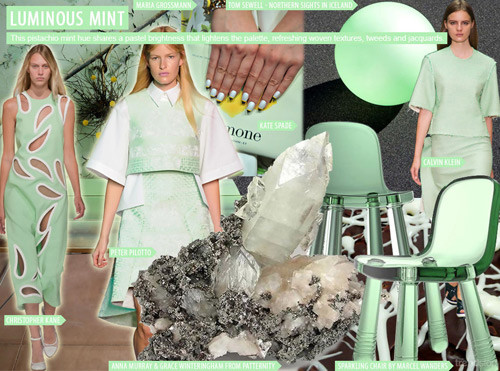


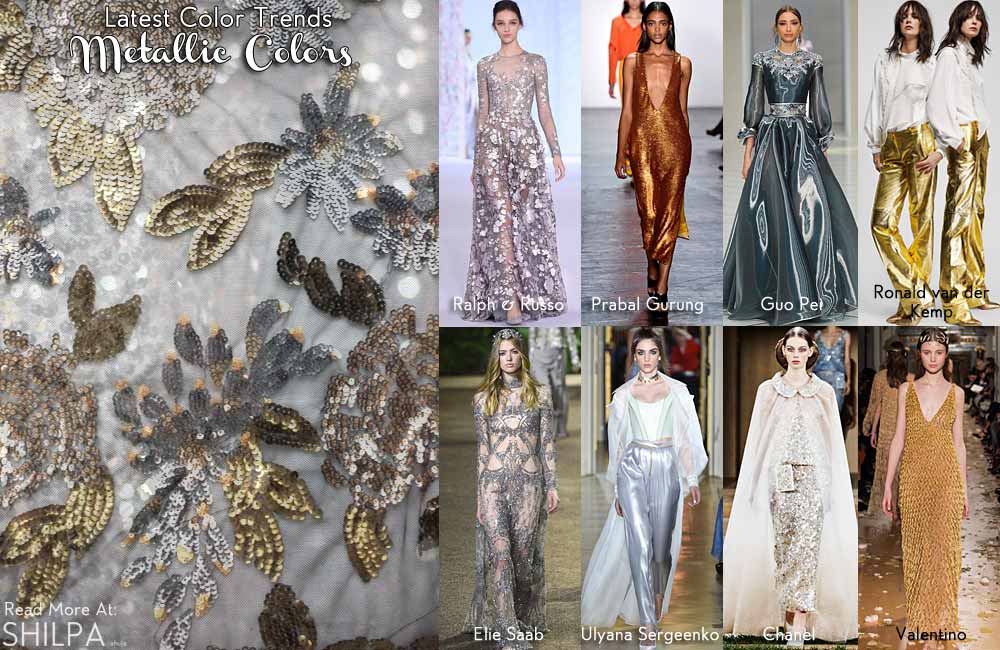


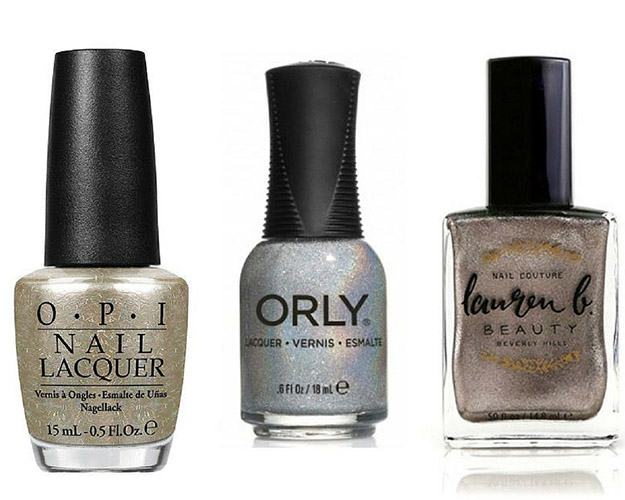






 Fruits and vegetables are the foundation of a healthy diet. They are low in calories and nutrient dense, which means they are packed with vitamins, minerals, antioxidants, and fiber.
Fruits and vegetables are the foundation of a healthy diet. They are low in calories and nutrient dense, which means they are packed with vitamins, minerals, antioxidants, and fiber.





















